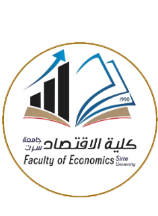A New Macro Model for Libya with the Measurement of the Economic Policies Effects
DOI:
https://doi.org/10.37375/esj.v3i4.2112Keywords:
New, Macro-model, LibyaAbstract
This study attempts to form an economic model illustrates the relationships of macroeconomic variables to each other in the Libyan economy and examines its ability to interpret the effect of some economic policies conducted recently by the Libyan authorities. The study relied on the analysis of macroeconomic equilibrium according to the simple Keynesian model, which describes the real aspect of the economy.
The results showed that the effect of the household heads provisions policy (HHP) was positive on the Libyan economy, but its effectiveness was less than the commercial and personal provisions policy (CPP), The results illustrated that the efficiency of CPP and HHP policies depends on the ability of the CBL to cover the total demand of foreign exchange and this ability is constrained by the volume of oil exports, and therefore the monetary and fiscal authorities may have replaced those policies by the importing provisions policy (IP) at the lowest levels of oil exports.The results have showed also that the CPP policy may play the role of an alternative to the policy of financing the public deficit by borrowing from the CBL, while the effects of latter and imposing customs new duties on the Libyan economy were negative.
The study concluded that fragile structure of the Libyan economy, due to large overdependence on oil incomes, and there is no opportunity to raise the economic level except by increasing oil exports, which are dependent on world oil markets, and this link works to further deepen the weakness of the Libyan economy, and to delink with oil export, the economic diversification has become an important development goal of Libyan State,
References
- Abuazoum, A. (2016), “Oil price fluctuations and their impact on economic growth in Libya: Econometrics Study (1990 -2010)", Academic Research Journal, No (5), pp 75 - 106.
- Ali, S. (2014), “Determinants of private investment in Libya", Sabha University Journal, No (3), pp 106 – 121.
- Almabrook, R. (2017), “Estimating the demand functions for the foreign trade components in the Libyan economy ", Study submitted to obtain the MSc degree, Sabha University, Sabha –Libya, 2017.
- Edgmand, M. R. “Macroeconomics: theory and policy”, Englewood Cliffs, N.J: Prentice-Hall, (2nd Ed), 1983.
- Elbeydi. K. (2014), “An Empirical Analysis of the Impact of Selected Macroeconomic Variables on Capital Formation in Libya (1970–2010)”, World Academy of Science, Engineering and Technology, No (86) PP 530 – 533.
- Hraib, S. & Taghogh, F. & Hawili, M. (2018), "The monetary stability in the Libyan economy" The second academic conference for economics and business studies, Musrata University, Dec 2018, Musrata – Libya.
- IMF (2007), “Libya: 2006 Article IV Consultation”. IMF Country Report No. 07/149 Washington, D.C: International Monetary Fund.
- Khairy, S. & Alqatous, S. (2018), “An economic analysis of the role of the public budget in achieving sustainable development in Libya", Al-Zawia University, Website: https://zu.edu.ly/university/journal/5c4386807523b762959e5629/research/5e0b4cc1e669f57f91a52d0 b.
- Libyan Audit Bureau (LAB), Annual report (2017), Annual Report, General National Congress (GNC), Tripoli, Libya.
- Shamiya, A. (2006) “Role of State in Economic Activities”, Libyan Organization of Policies and Strategies, Tripoli, Libya. Retrieved from Libyan Organization for Policies and Strategies, Website: http://loopsresearch.org/projects/view/102/?lang=ara
- Twari, N. & Amer, S. (2018), “The role of private investment in economic growth in Libya", Science and Technology Journal (Humanities), No (1), pp 38 – 49.
- Yakhlif, Y. (2016), “Estimating the consumer spending function - using the relative income (RI) hypothesis”, Journal of Economics and Business Studies, No (1), pp 44 - 54.
- Yakhlif, Y. & Sassi, W. (2016), "The relationship between unemployment and inflation in the Libyan economy", Academic Research Journal, No (6), pp 393 – 408.
- Alhasia, M. “The Role of Money in the Libyan Economy: An Analytical and Applied Study", Al-Thawra: printing house, Benghazi – Libya, 1979.




































